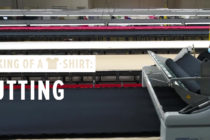We’re glad to see you back for Part 2 of exploration what distribution and printing shops have learned post-lockdown, and what practices they’re currently adopting to continue growing successfully! Picking up where we left off, we’re now looking at the shifts in management style, the new resurgence of social media, and how to tackle events both online and in person.
Management Style

One of the biggest changes since the beginning of the pandemic has been the shift in work-life balance across all industries. To keep their staff safe, healthy and working, all business owners have had to get very creative.
“Directly before the pandemic closed businesses around the world, we focused on converting as many of our internal processes and ways of communicating into virtual ones with high trackability, visibility and measurability,” says Tyrone M. Robinson III, owner of Opportunities 2 Serve, a consultancy to growing companies. “During the pandemic, our focus was on over-communication, asynchronous communication, as well as health and well-being. Savvy managers showed increased support and care throughout the period.”

LaFave continued to treat his employees like family, spending a lot of time and money to make sure they were on top of all of the available government benefits. “We did everything we could for our employees who we needed to furlough in 2020,” he says. “All of our staff returned to work when we needed them, and we’ve been able to add some great new team members this year.”
One of the biggest shifts here has been to create hybrid work schedules. It may not be necessary to have a shop full of employees all at the same time. Instead, employees can stagger their schedules to decrease the number of people in the building. In some cases, employees can even work from home.
Robinson also notes that hiring has been tough for businesses of all sizes. “Today, it’s not only an issue to find quality people,” he says. “It’s just as tough to find people interested at all for these multifaceted opportunities.” The application rates have decreased by at least 50% in this—and many—other industries around the country. The scarcity of employees obviously puts a premium price on talent which may not be all that realistic for many small companies.
“It’s important to know who you need for what position, what they need to know (requirements) and be able to do (duties) on paper—and in real-time,” Robinson says. “Applicants may look great on paper and on pre-application tests, but can they do exactly what you need them to do? Can they perform the duties that don’t make the job description, because they’re fluid and problem solve/think outside of the box? Narrowing down the attributes necessary for success, the pre-application testing with success baselines, the prerequisite real-time work experience and KPIs is key.”
As much as the logistics to work has changed, so has the politics and culture of work. In one year, we have come to learn much more about the challenges and concerns of our colleagues. For this reason, many shops have implemented Diversity, Equity and Inclusion—or DEI training.
Add these techniques to your management style to increase your apparel shop success:
- Listen to your employees so you can learn what’s important to them. Employee stress can be eased, and morale increased, just knowing that management is hearing what they think. “Overall, when your employees know you care for them and they feel supported, you get better results,” Robinson says. “The crisis was a unique challenge for us all. It showed just how interdependent we are and what it takes to succeed.”
- Be flexible. When possible, accommodate for a long-term plan and see quality employee’s needs for different days or work hours. Loyal employees want your shop to succeed. So, if this accommodation doesn’t work, collaborate to find a solution that works for both of you.
- Cross-train employees. During the pandemic, LaFave had to furlough employees as needed. “The good thing is, now when we hire, we tell candidates they’ll have a primary job, but we’ll train them in as many aspects of production and the business as possible,” he says. “Our employees also got a lot of cross-training, so they expand their knowledge as well.”
- Discuss DEI with your staff and let them know this is important to you and your business culture. Learn together how to implement more respect and inclusion into your workday.
Social Media for Marketing and Customer Service

Because so many people were on lockdown, they spent a lot of time connecting with people through social media. Over the last year, these channels have become a lifeline to current and potential customers.
Social media, especially Instagram, is poised to help your business grow. It can even help you with managing customer issues such as negative reviews. Shops that made it through the roughest year on record made social media a priority.
“We do a lot of informative, celebratory and funny posts,” LaFave says. “The funnier ones get the most engagement. Overall, being consistent on social media keeps us top of mind for our clients and to those who ‘like’ our posts.”
Here’s how you can implement social media for marketing and customer service:
- Set your business up on all social media platforms. People use social media to learn more about businesses. It’s important to claim your social media real estate and have a presence everywhere. You can focus more posts on the channels where your clients hang out.
- Make at least one person responsible for managing your social media accounts. If possible, give this job to someone who’s already familiar with social media. It’s even better if they can handle social media management using just their smartphone.
- Remember that social media is another customer service channel. Customers post on social media (or reach out to you in the DMs) and expect a response quickly. Be prepared to answer their questions and even address their complaints in a professional manner. This will show that even when you make a mistake, you own up to it and will rectify the situation. Plus, lots of decorators meet new people in the DMs who quickly turn into customers.
Events: Online and In-Person, or Both

In the past, events were a part of an overall marketing plan. However, last year many live events went non-existent virtually overnight. Decorators and distributors had to get real creative, real quick. The result was more online events with shops incorporating webinars and videos-on-demand for customers to view at their leisure, and personal Zoom meetings to discuss potential designs and orders.
“A lot of the events that previously happened in real life moved online, so that made some event and marketing choices easy,” Shreve says. “If you did the real-world version, it made sense to do the virtual version as well. For the companies that offered new cyber options due to the pandemic, the choice to participate or not might be a little more difficult. This is where companies that invest the time to determine who their target markets are and where the people in those markets congregate will have an advantage.”
For example, during the pandemic, LaFave, who’s vice president of his local GAPPP (the Regional Trade Association for the state of Georgia), led its online Lunch & Learn meetings for 16 months. Supplier reps presented products and sales techniques to distributors. “My staff and I attended these meetings as often as possible,” he says. “It was like getting a master’s degree in under a year and we’ve used the information to retool our processes and increase our efficiency.”
Now that in-person conferences and industry events are happening again, shops that thrived during the lockdowns are switching to a ”best-of-all-worlds” approach. While attending some of the bigger events like trade shows, decorators are also continuing to attend and host online events as customers welcome the variety of options.
Here’s how you create a comprehensive marketing plan for in-person and online events:
- Get back into the practice of visiting industry trade shows and other events. Where you can create brand name recognition as well as sell your merchandise.
- Create short live webinars that you make available on demand. This is where you can overview the latest fashion trends, as well as new or popular decorating options. You can have client guests come on to talk about how your services and decorated products have helped them achieve their marketing goals.
- Record “how-to videos” that show how you fulfil an order. Use sped-up, fast-forward footage to move quickly over the longer portions. Show the entire process so customers know why it takes time to make a quality product. This should also explain why getting orders in early is important. It will be evident to the viewers you need time to do everything that you need for the preparation and execution of the order.
- Record a video of your company’s FAQ (Frequently Asked Questions). This can let customers watch your explanations at their leisure.
- Schedule quarterly meetings with your customers and vendors where everyone can attend, even if they’re in another state or country. You want to get everyone involved. The more connections you make with an organization, the better your orders with them will be. It also means that you’ll increase the longevity of your client relationship.LaFave got creative by tapping into National Hamburger Day (which falls on May 2). His team set up a grill, tent and tables in the parking lot and gave away free hamburgers. “We had a lot of other area businesses show up,” he says. “Another big one is National Hotdog Day on July 23. That one’s twice as big!”
A Better Future, Together

During COVID-19, BELLA+CANVAS launched a true-to-life video series called “Press On” in partnership with The Ink Kitchen, Impressions magazine and Ryonet. We wanted to provide a community platform for print shop owners and industry professionals to share how the safer-at-home orders have and continue to impact their businesses.
We invite you to listen in to some of our most vulnerable and honest conversations with decorators across America in our five episodes of “Press On,” which show the strength, support and resiliency of this community during the pandemic and onwards.







